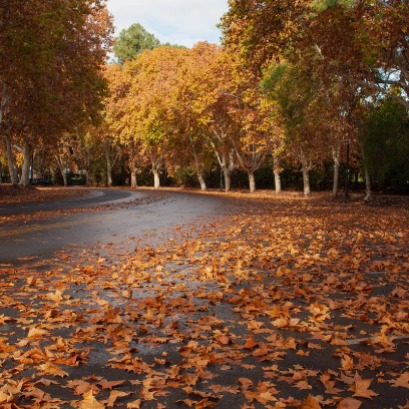
Why do the leaves of the trees change color in autumn?
In autumn, the trees exhibit a change in the color of their leaves as a result of the reduction of sunlight and the decrease in temperatures. All the details.
With the arrival of autumn, the leaves of the trees change color due to a natural process related to the reduction of sunlight and the fall of temperatures. As the days are shortened and the cold increases, in the trees other pigments that give the leaves give the leaves their yellow, orange, red and brown tones characteristic of this station. We tell you what it is. Why do the leaves of the trees change color in autumn? During spring and summer, the leaves of the trees remain green thanks to chlorophyll, the essential pigment for photosynthesis. This substance allows plants to capture sunlight and transform it into chemical energy for growth. However, as autumn approaches and shorten the days, the amount of sunlight decreases and temperatures descend. In response, trees stop the production of chlorophyll, since photosynthesis is reduced and is more expensive energy. Carotenoids are responsible for yellow and orange colors, while anthocyanins produce reddish or violet tones. The combination of these pigments, together with the cellular structure of each species, determines the color palette that characterizes autumn. The fall of the leaves allows the tree to reduce the loss of water and prepare for the winter, when the climatic conditions are more adverse. Thus, the color change of the leaves in autumn is the result of the interaction between environmental and physiological factors, and reminds us of the delicate balance of nature.
IT MAY INTEREST YOU
 They promote research in pine resins from the NEA
They promote research in pine resins from the NEA
The forestry industry is one of the most important sectors in the economies of Misiones and Corrientes. Thousands of hectares of pine supply the paper, pulp, boards and sawmill industry. Pinus elliottii, one of the species established in the region, in addition to providing wood, is used to produce resin, a non-wood forest product with high demand in the chemical, pharmaceutical and cosmetic industries. In 2\024, resin extraction of approximately 52,6\0\0 tons was achieved from approximately 18,\0\0\0,\0\0\0 trees in production, generating income and jobs with high expansion potential.
 Experts cant believe it, but this tree is the oldest in the world and continues to bear fruit: it is 4,000 years old.
Experts cant believe it, but this tree is the oldest in the world and continues to bear fruit: it is 4,000 years old.
Nature keeps secrets that defy the passage of time, and one of the most surprising examples is a tree that, approximately 4,000 years old, continues to bear fruit today. This specimen has become a symbol of resistance and longevity, capable of surviving climate changes, landscape transformations and human activity itself.
 The second largest wetland in South America is located in Argentina: what is it?
The second largest wetland in South America is located in Argentina: what is it?
Argentina has national parks that place it in a unique position within South America, competing with 300 others. Which is the largest? South America is home to more than 300 national parks, but many go unnoticed. There are extensive wetlands that have been the subject of major ecological restoration projects, to coastal mountains with deep indigenous heritage. Today we tell you the case of one located in Argentina.





















